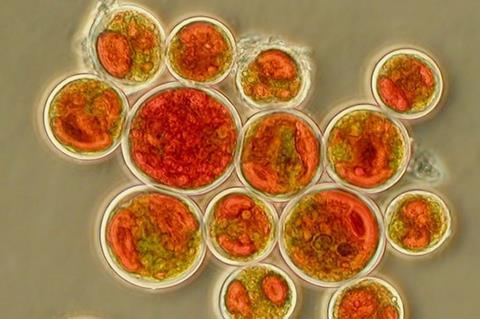Researchers have proved that red light can promote photoautotrophic growth of Haematococcus pluvialis and investigated the related carbon fixation mechanism.

The results of the work by the research group of Prof. Huang Qing, from Hefei Institutes of Physical Science (HFIPS) of the Chinese Academy of Sciences (CAS), were published in Aquaculture.
H. pluvialis is a unicellular green alga that has been widely recognised for its ability to accumulate astaxanthin in large quantities and is currently also the best established biological source of natural astaxanthin in nature.
Astaxanthin is used as a dietary supplement and feed supplement as food colorant for salmon, crabs, shrimp, chickens and egg production.
Studies show that the use of appropriate combinations of red and white light can promote the growth of H. pluvialis and improve astaxanthin production, but the processes and mechanisms in which red light plays a role are not well understood.
In this study, researchers worked on a new method to promote growth of H. pluvialis.
Light switch
After switching the illumination culture mode from white to red light in the late logarithmic phase of growth, researchers found that autotrophic growth of H. pluvialis was improved.
They also confirmed that red light could promote enhanced photosynthesis and increase CO2 fixation rates by regulating the activity of carbonic anhydrases and maintaining the pH of the medium stable between 8 and 9.
Their further study revealed the related mechanism - the red light regulated the transcription factors of carbonic anhydrase gene expression possibly through the phytochrome mediated COP1-SPA1 complex pathway, which upregulated the expression of carbonic anhydrase genes CAH1 and CAH3, and then affected the activity of carbonic anhydrase.
“Our work can provide guidance for more efficient use of light during microalgal culture to achieve photoautotrophy and for potential practical applications in carbon neutralization,” said Li Lamei, first author of the paper.







No comments yet